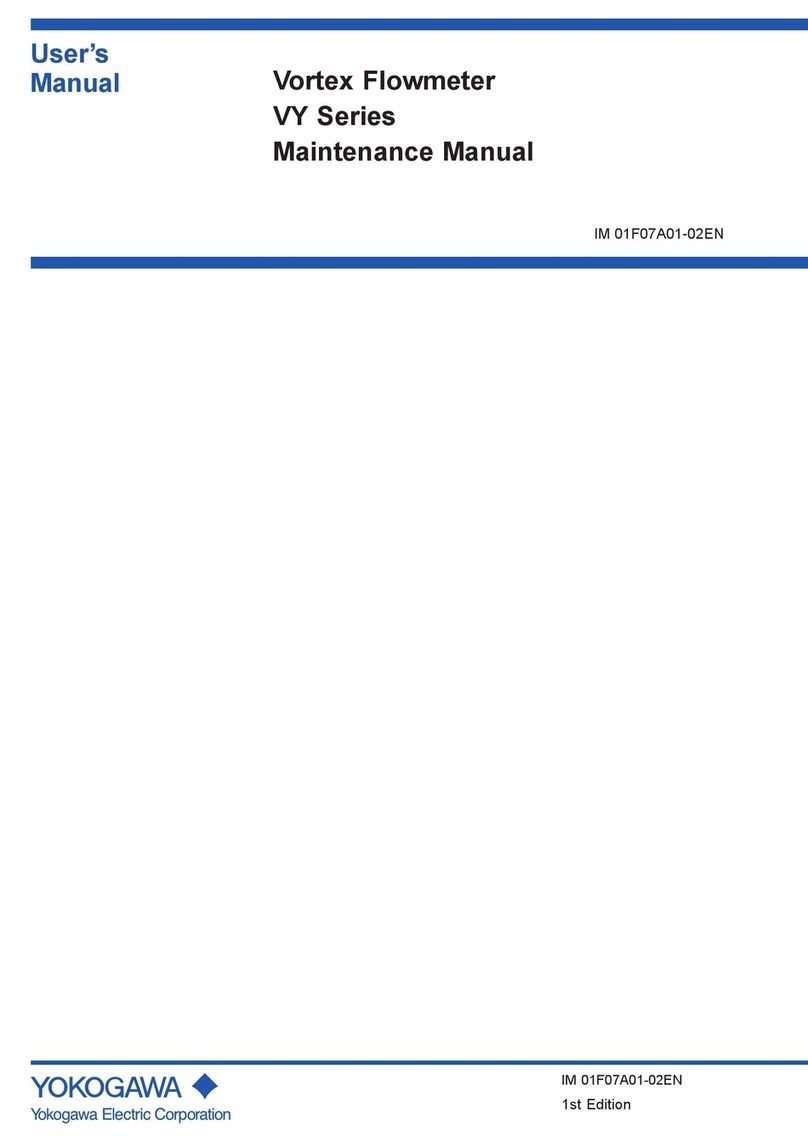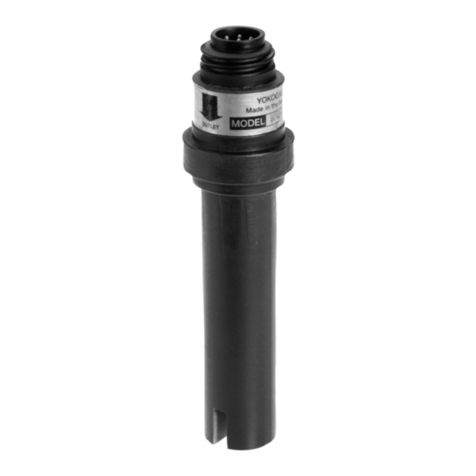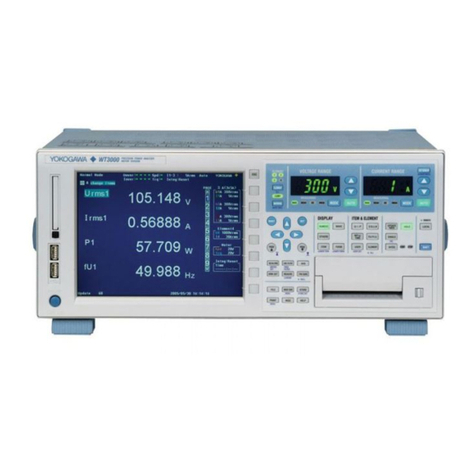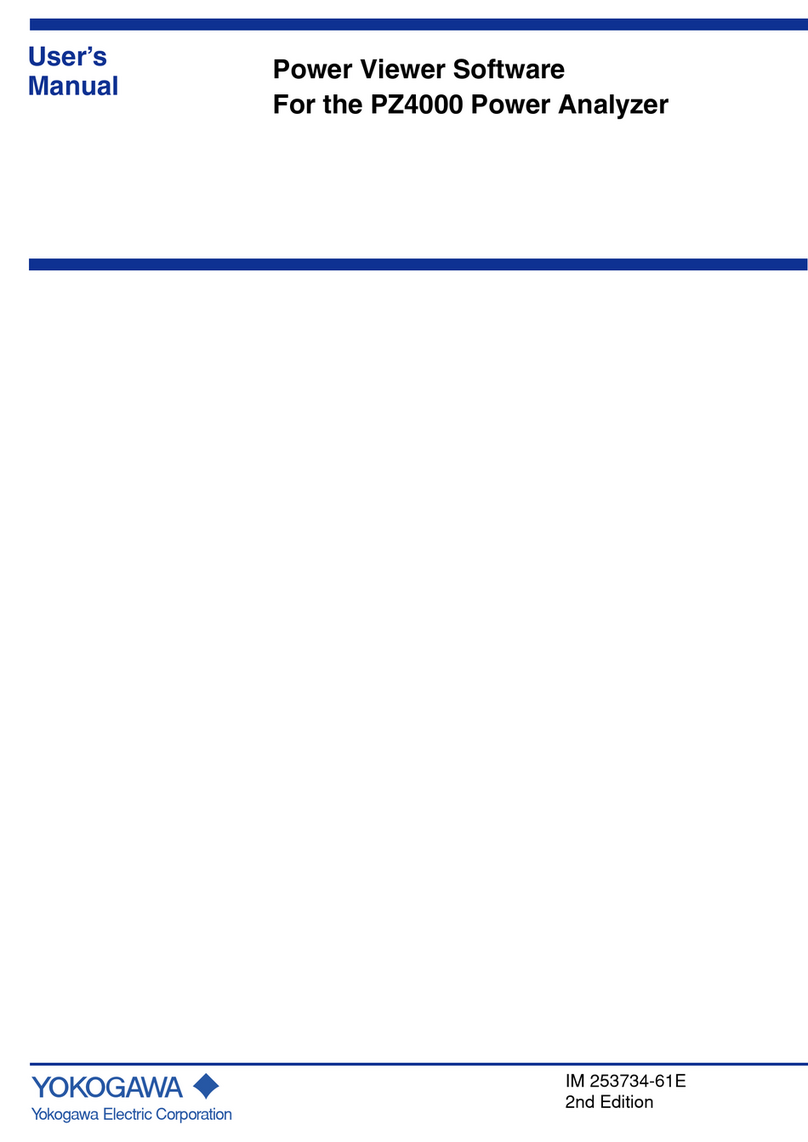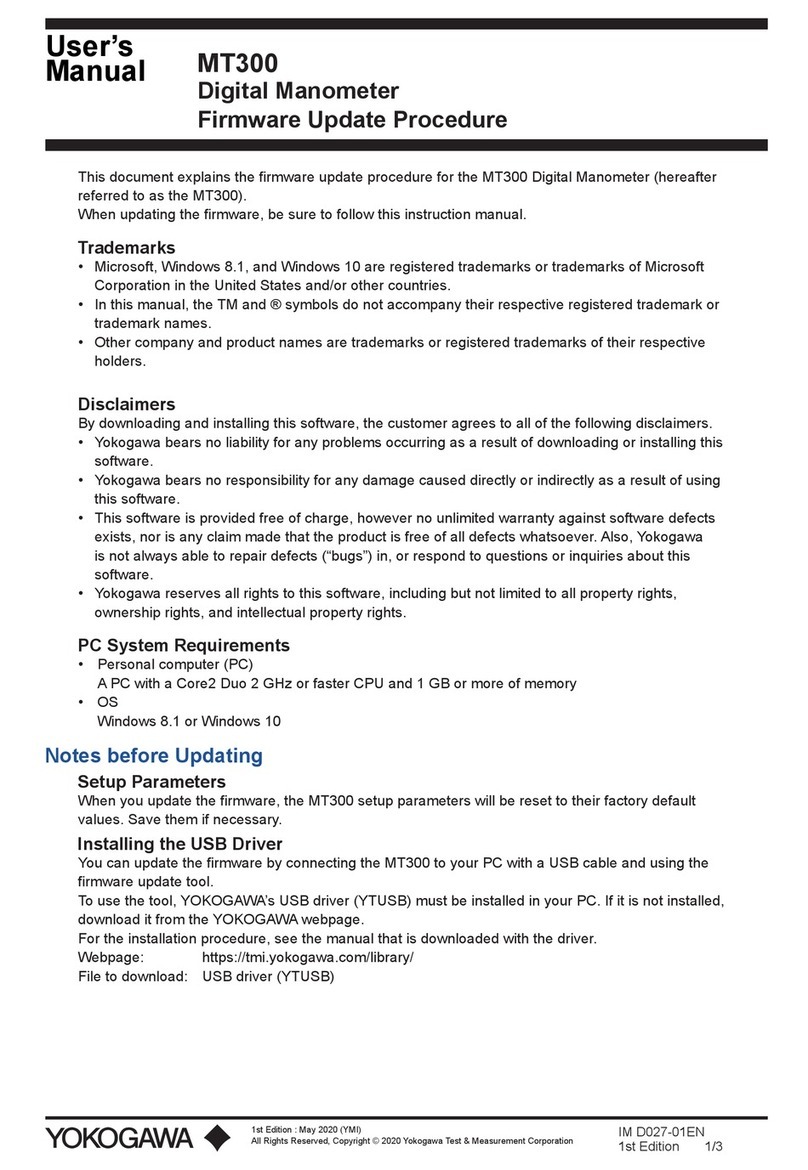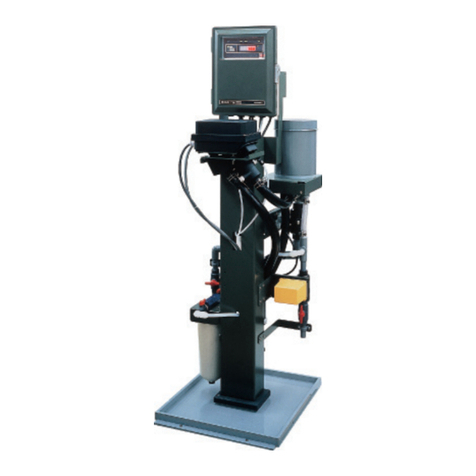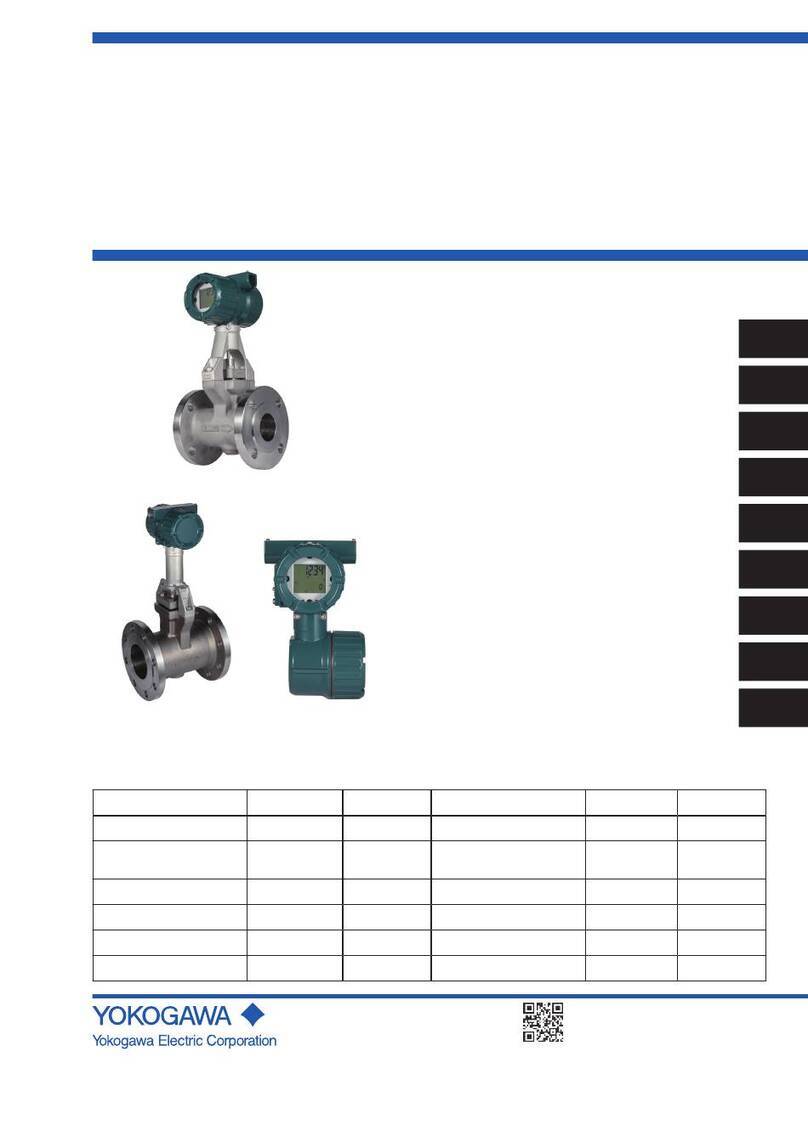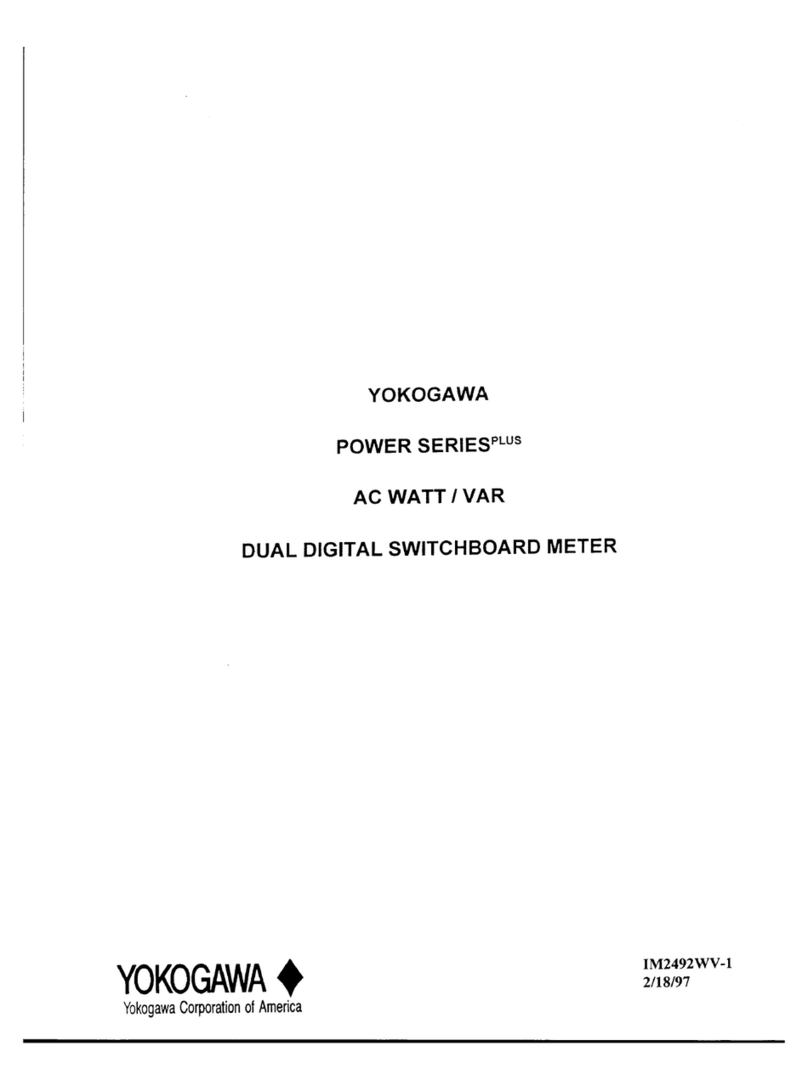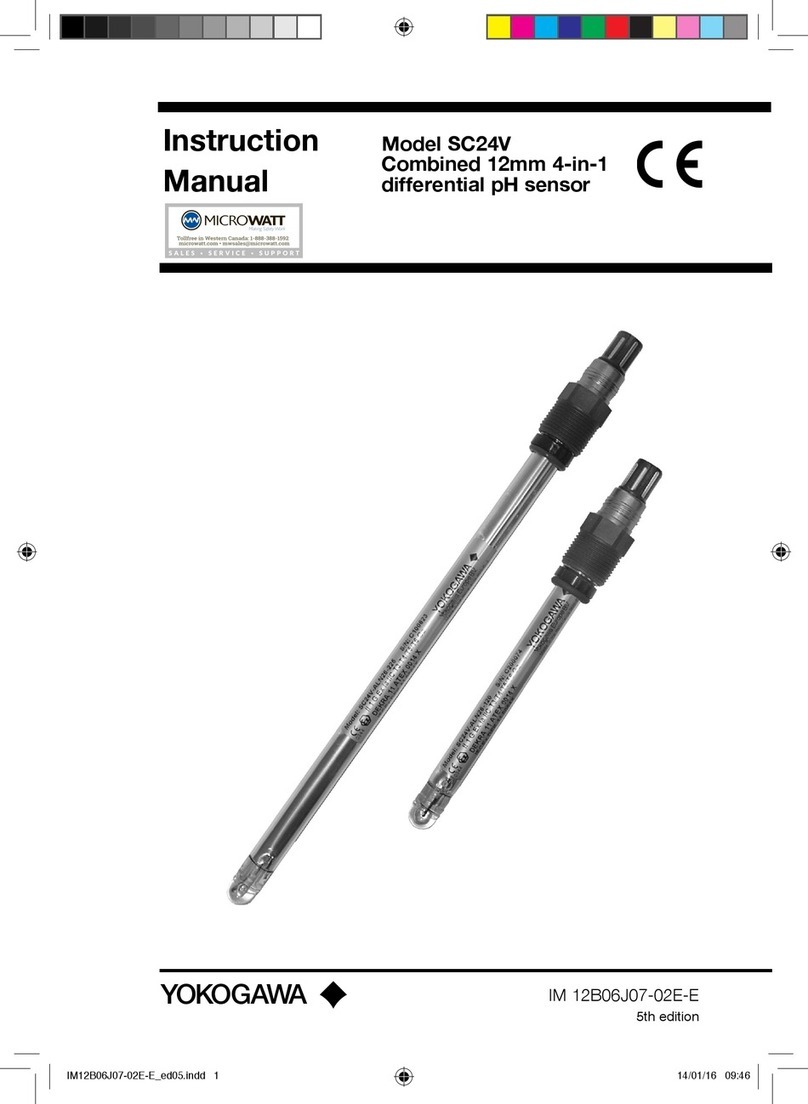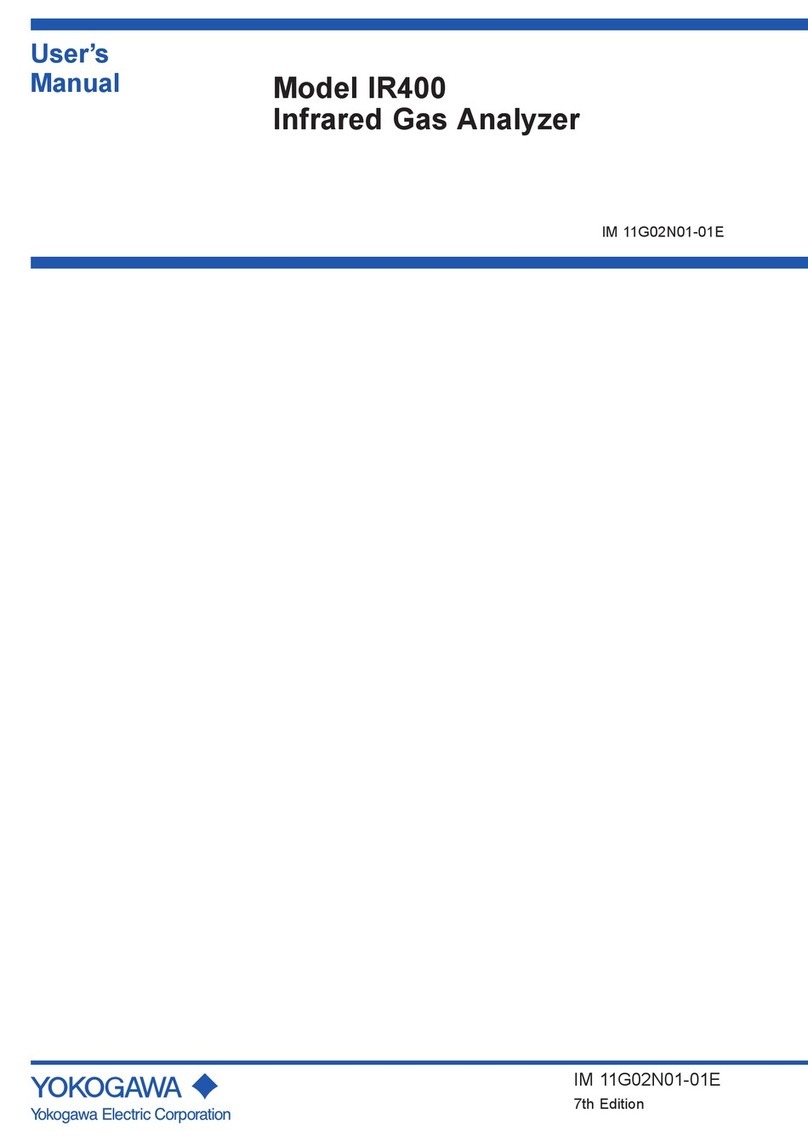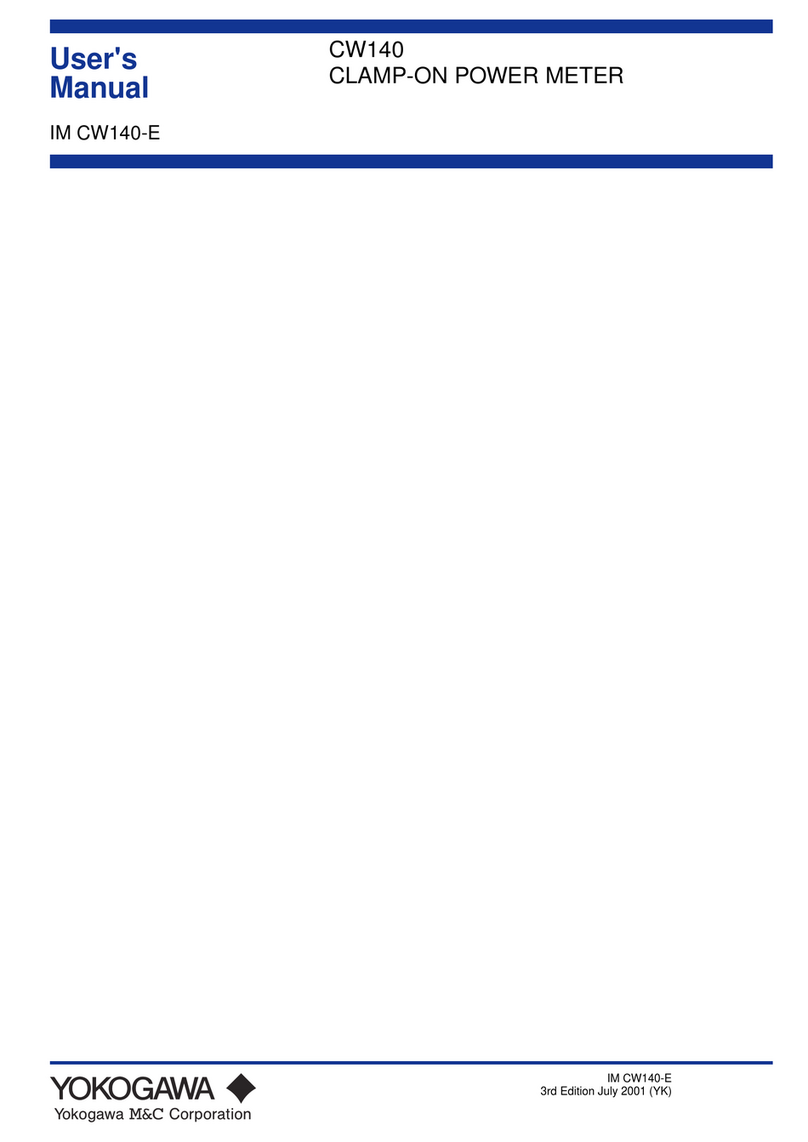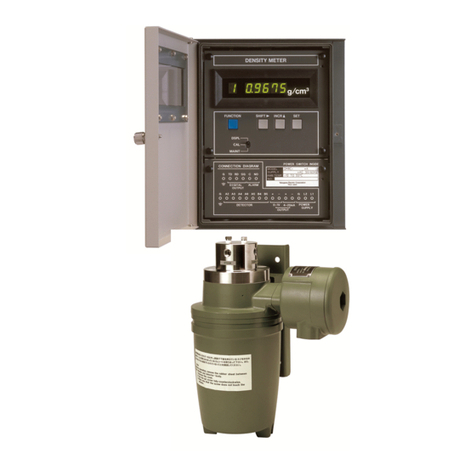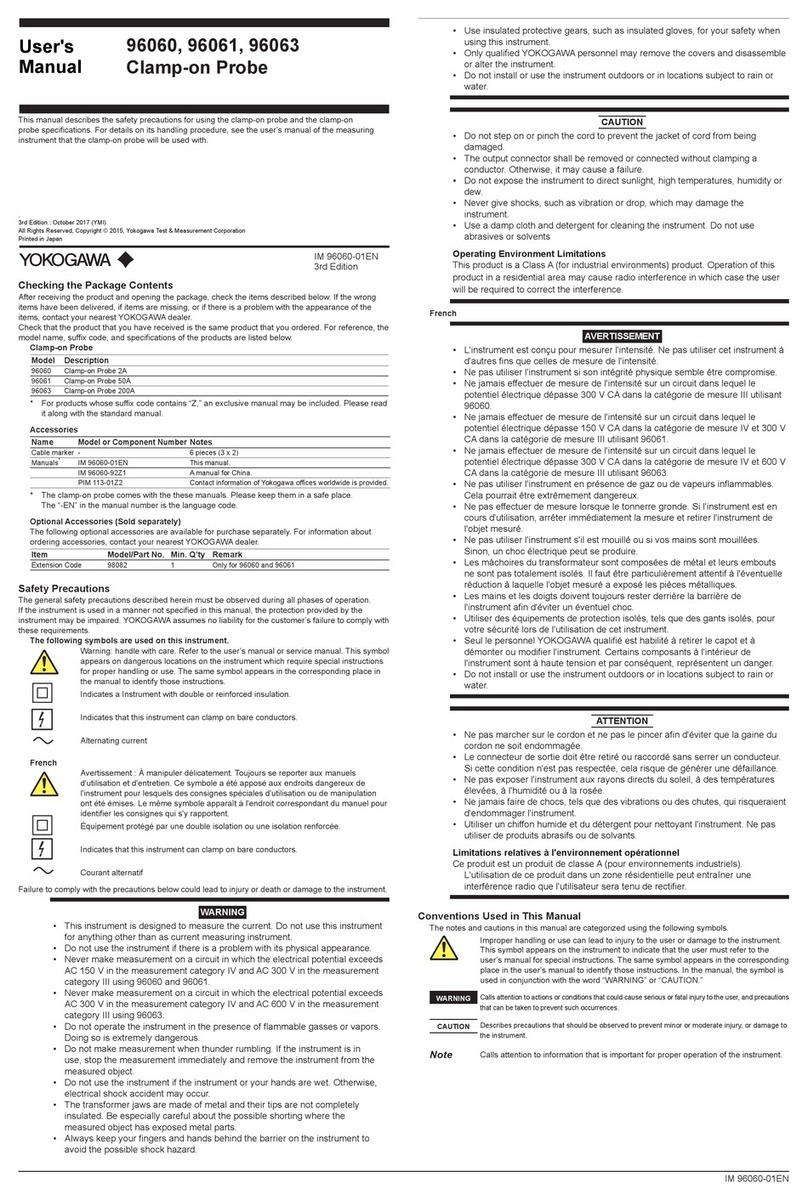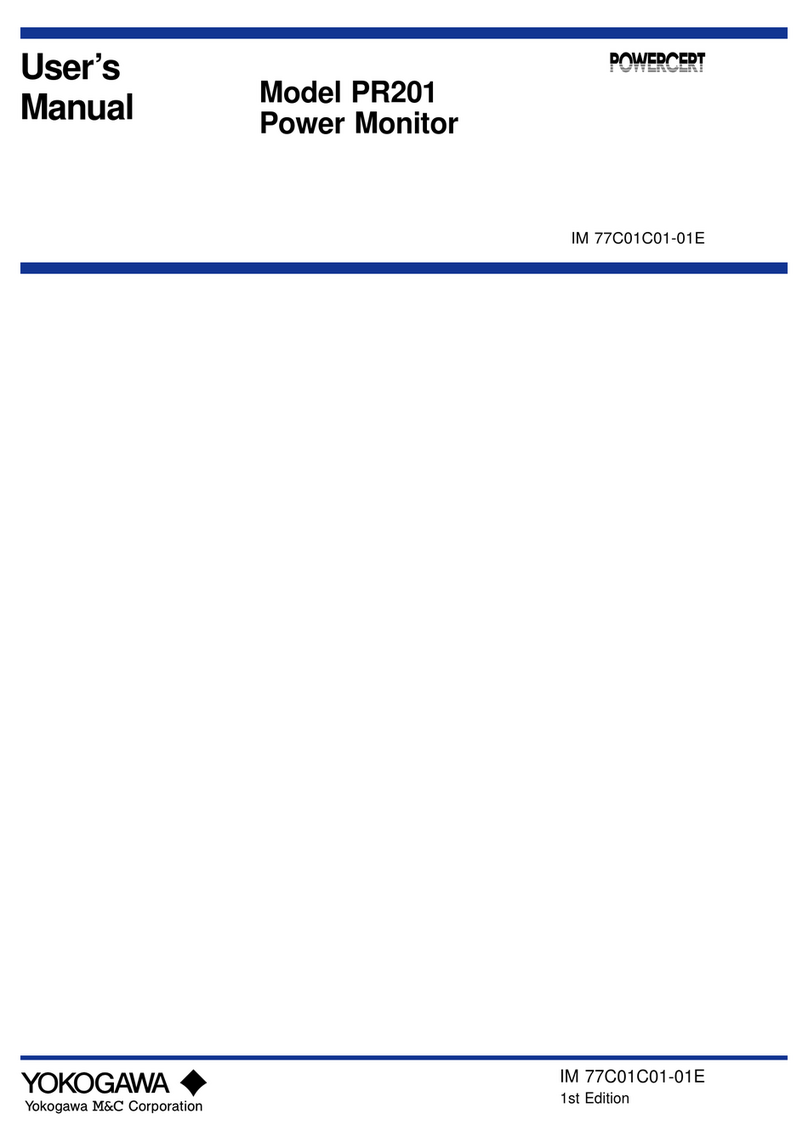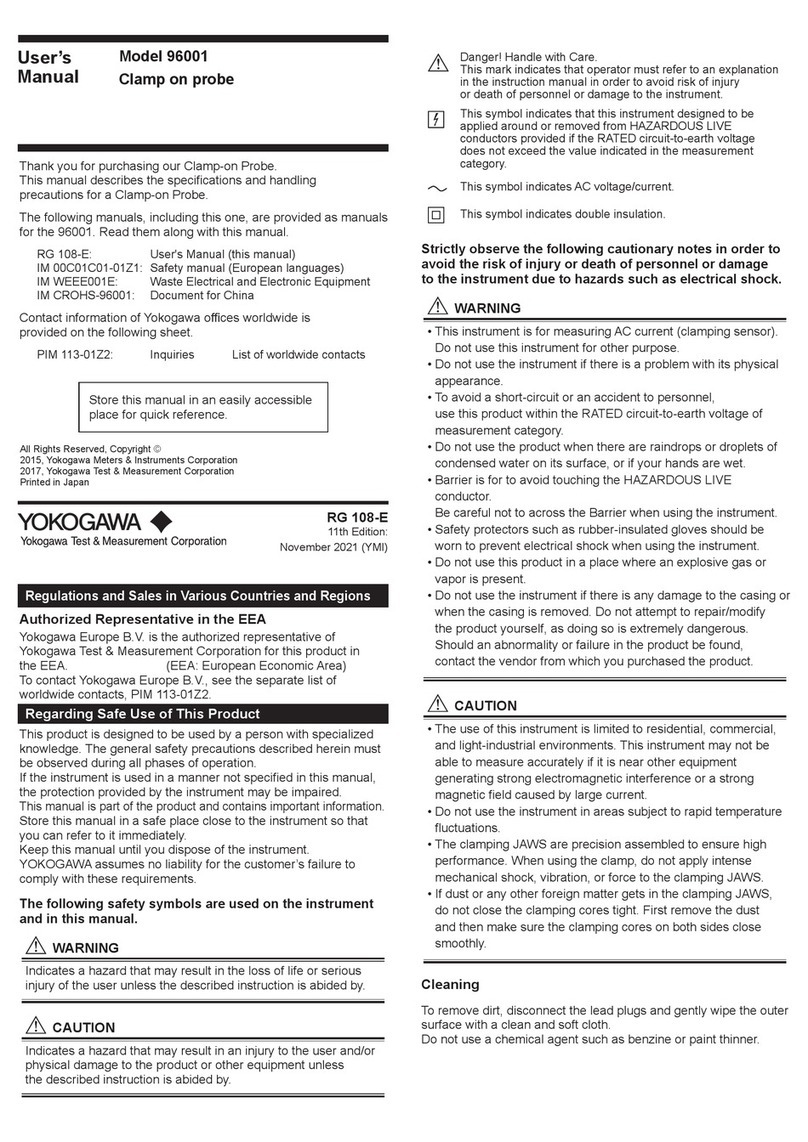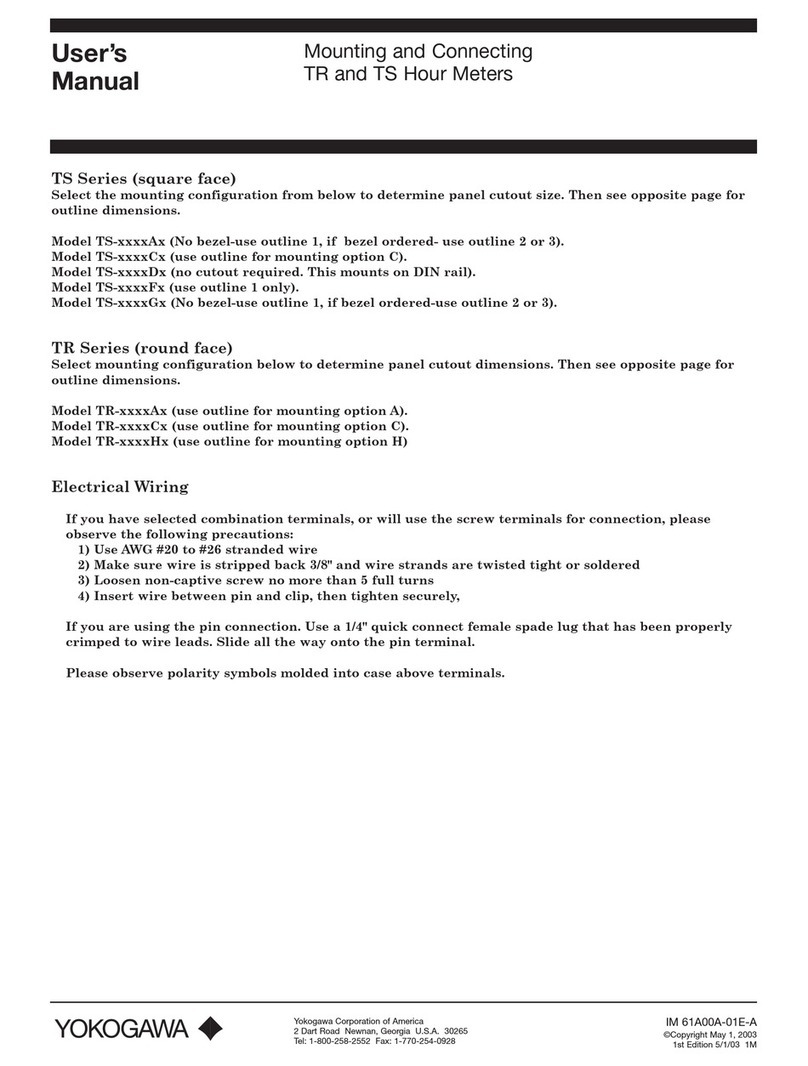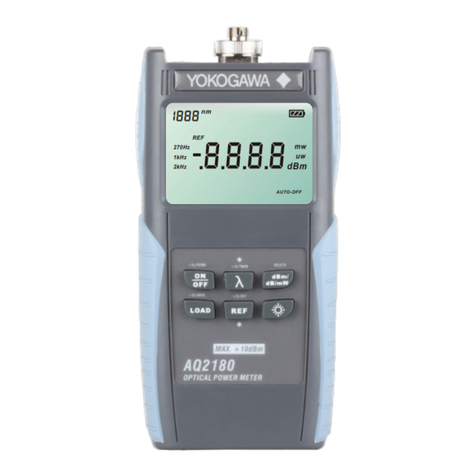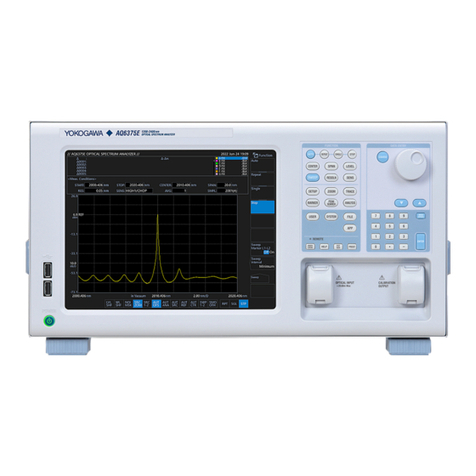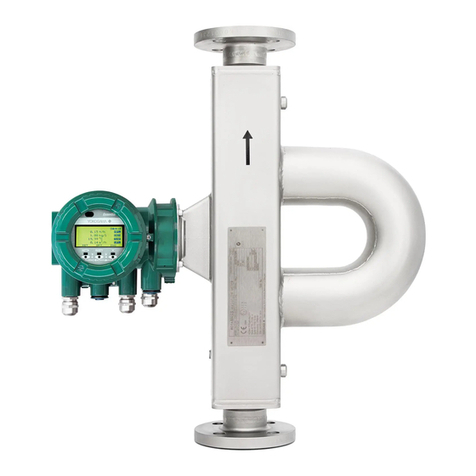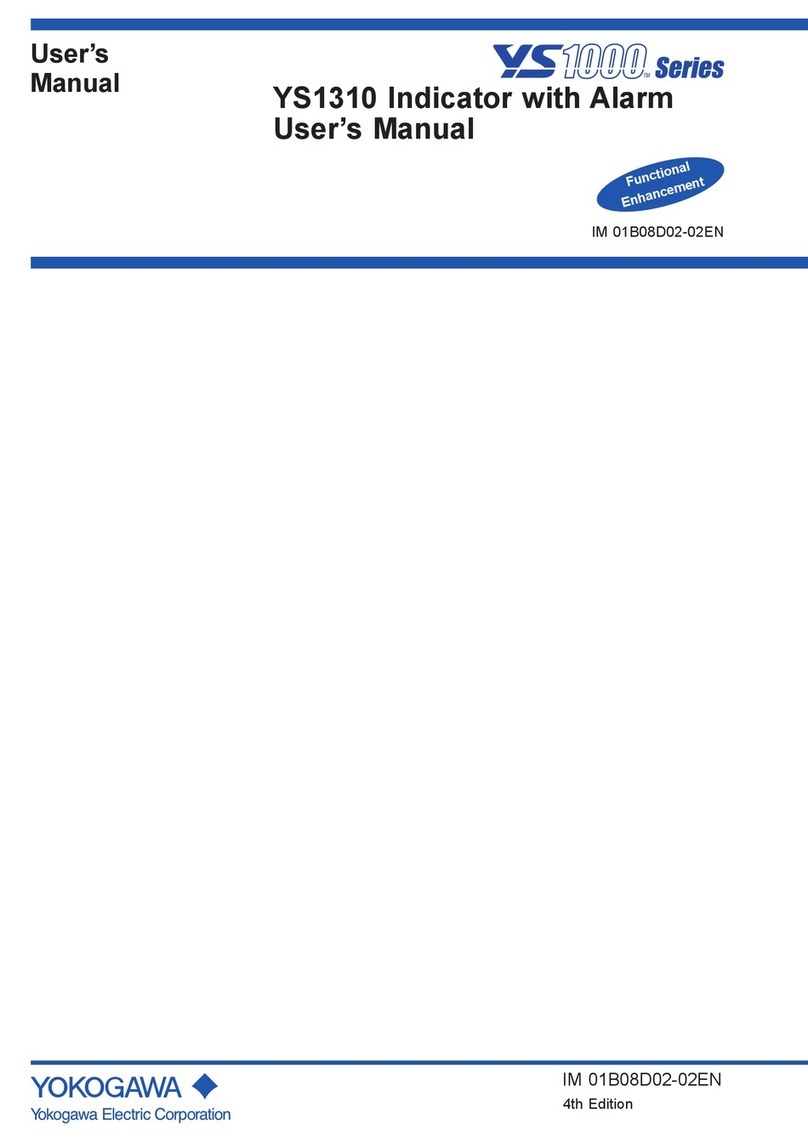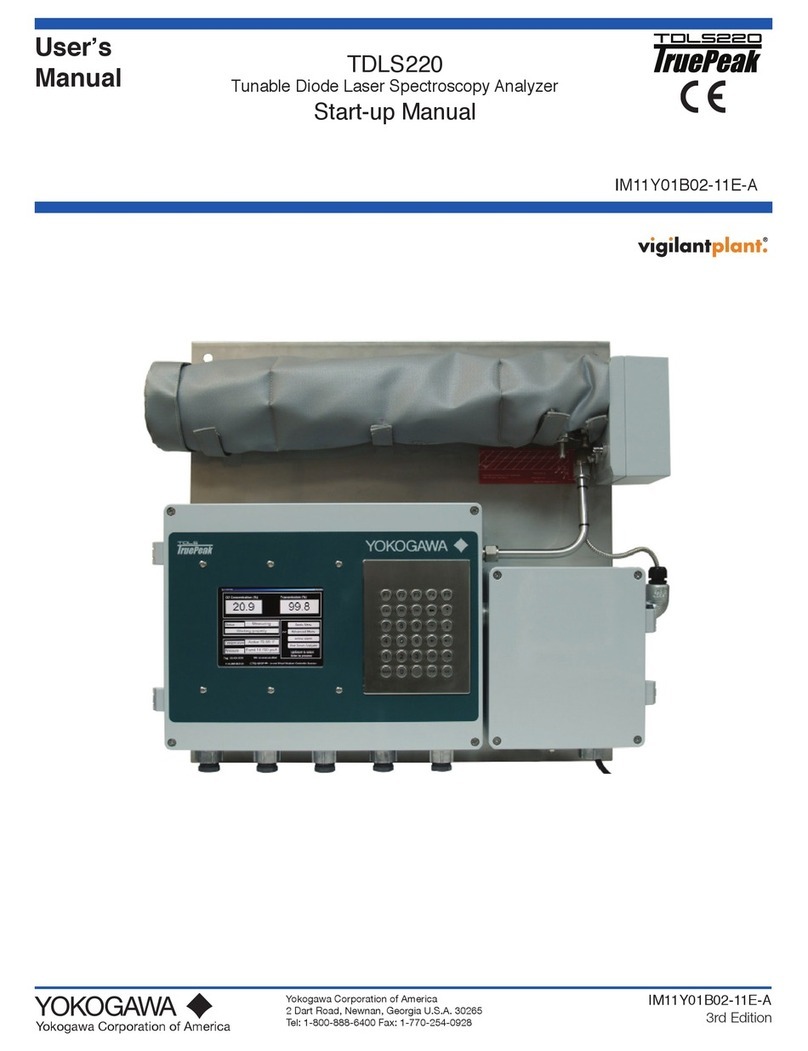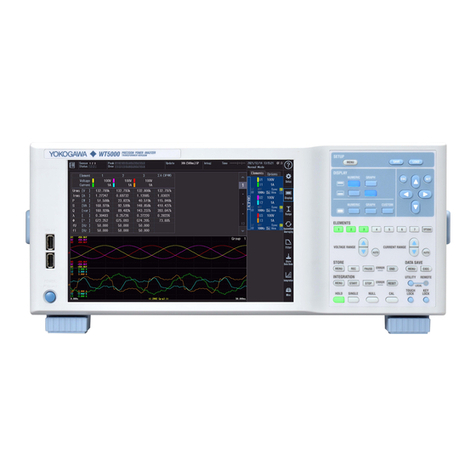
r’s
Thank you for purchasing the PB500 500 MHz Passive Probe. To ensure correct use, please read
this manual thoroughly before beginning operation. After reading the manual, keep it in a convenient
location for quick reference whenever a question arises during operation.
Contact information of Yokogawa offices worldwide is provided on the following sheet.
• PIM113-01Z2 List of worldwide contacts
Model 701943
PB500
500 MHz Passive Probe (10:1)
8th Edition: April 2021 (YMI)
All Rights Reserved, Copyright © 2005, Yokogawa Electric Corporation
All Rights Reserved, Copyright © 2015, Yokogawa Test & Measurement Corporation
Printed in Japan
Notes
• The contents of this manual are subject to change without prior notice as a result of continuing
improvements to the software’s performance and functions. The figures given in this manual may
differ from those that actually appear on your screen.
• The contents of this manual are subject to change without prior notice as a result of continuing
improvements to the software’s performance and functions. The figures given in this manual may
differ from those that actually appear on your screen.
• Copying or reproducing all or any part of the contents of this manual without the permission of
YOKOGAWA is strictly prohibited.
The following symbols are used in this manual.
Improper handling or use can lead to injury to the user or damage to the instrument.
This symbol appears on the instrument to indicate that the user must refer to the
user’s manual for special instructions. The same symbol appears in the corresponding
place in the user’s manual to identify those instructions. In the manual, the symbol is
used in conjunction with the word “WARNING” or “CAUTION.”
WARNING Calls attention to actions or conditions that could cause serious or fatal injury to the
user, and precautions that can be taken to prevent such occurrences.
CAUTION Calls attentions to actions or conditions that could cause light injury to the user or
damage to the instrument or the user’s data, and precautions that can be taken to
prevent such occurrences.
Note Calls attention to information that is important for proper operation of the instrument.
Safety Precautions
This product is designed to be used by a person with specialized knowledge.
Make sure to comply with the safety precautions mentioned hereafter when handling the probe.
YOKOGAWA assumes no responsibility for any consequences resulting from failure to comply with
these safety precautions. Also, read the User’s Manual of the measuring instrument thoroughly so that
you are fully aware of its specifications and handling, before starting to use the probe.
This manual is part of the product and contains important information. Store this manualin a safe place
close to the instrument so that you can refer to it immediately. Keep this manual until you dispose of
the instrument.
The following symbols are used on this instrument.
Handle with care. Refer to the user’s manual or service manual. This symbol appears on
dangerous locations on the instrument which require special instructions for proper handling
or use. The same symbol appears in the corresponding place in the manual to identify those
instructions.
Make sure to comply with the following safety precautions in order to prevent accidents
such as an electric shock which impose serious health risks to the user and damage to the
instrument.
WARNING
Grounding of the measuring instrument
The protective grounding terminal of the measuring instrument must be connected to ground.
Ground lead of the probe
Make sure to connect the ground lead of the probe to the grounding potential.
Handling of the passive probe
Do not touch the probe’s input terminal or the probe itself with wet hands.
Do not operated with suspected failures
If you suspect that there is damage to this probe, have it inspect by a service personnel.
Observe maximum working voltage
When the oscilloscope’s input coupling is AC, DC voltage of the same electric potential
as the probe’s input is applied to the oscilloscope’s input. Make sure not to exceed the
oscilloscope’s maximum input voltage.
Do not operate in wet/damp conditions
To avoid electric shock, do not operate this probe in wet or damp conditions.
Do not operate in explosive atmosphere
To aviod injury or fire hazard, do not operate this probe in an explosive atmosphere.
Do not disassemble or modify
Do not disassemble or modify the product. YOKOGAWA assumes no liability if you
disassemble or modify the product.
Avoid exposed circuitry
To avoid injury, remove jewelry such as rings, watches, and other metallic objects. Do not
touch exposed connections and components when power is present.
Damaged Signal Cable
If the signal cable is torn and the inner metal is exposed or if a color different from the outer
sheath appears, stop using the cable immediately.
CAUTION
Maximum input voltage
Do not supply any voltages exceeding the maximum input voltage to the probe.
French
AVERTISSEMENT
Mise à la terre de l’instrument de mesure
S’assurer de connecter la mise à la terre protectrice de l’instrument de mesure.
Fil de terre de la sonde
S’assurer de connecter le fil de terre de la sonde au potentiel de mise à la terre.
Manipulation de la sonde passive
Ne pas toucher le terminal d’entrée de la sonde ou la sonde elle-même avec des mains
mouillées.
Ne pas utiliser en cas de défaillances suspectées
Si vous suspectez que la sonde est endommagée, contactez votre revendeur ou
représentant commercial YOKOGAWA.
Respecter la tension d’entrée maximum
Lorsque le couplage d’entrée de l’instrument de mesure est en CA, la tension en CC du
même potentiel électrique que l’entrée de la sonde est appliquée à l’entrée de l’instrument
de mesure. S’assurer de ne pas dépasser la tension d’entrée maximum de l’instrument de
mesure.
Ne pas utiliser dans des conditions humides
Afin d’éviter un choc électrique, ne pas utiliser cette sonde dans des conditions humides.”
Ne pas utiliser dans une atmosphère explosive
Afin d’éviter des risques de blessures ou d’incendie, ne pas utiliser cette sonde dans une
atmosphère explosive.
Ne pas démonter ou modifier
Ne pas démonter ou modifier le produit. YOKOGAWA se dégage de toute responsabilité si
vous démontez ou modifiez le produit.
Éviter les circuits exposés
Afin d’éviter des blessures, retirer les bijoux comme les bagues, montres et autres objets
métalliques. Ne pas toucher les connexions et les composants exposés après mise sous
tension.
Câble de signal endommagé
Si le câble de signal est déchiré et que le métal intérieur est exposé ou si une couleur
différente de la gaine externe est visible, arrêter immédiatement d’utiliser ce câble.
ATTENTION
Tension d’entrée maximum
Ne pas appliquer à la sonde de tension dépassant la tension d’entrée maximum.
Waste Electrical and Electronic Equipment
Waste Electrical and Electronic Equipment (WEEE), Directive
(This directive is valid only in the EU.) This product complies with the WEEE
directive marking requirement. This marking indicates that you must not discard this
electrical/electronic product in domestic household waste.
Product Category
With reference to the equipment types in the WEEE directive, this product is classified
as a “Monitoring and control instruments” product.
When disposing of products in the EU, contact your local Yokogawa Europe B.V.
office. Do not dispose in domestic household waste.
Authorized Representative in the EEA
Yokogawa Europe B.V. is the authorized representative of Yokogawa Test & Measurement Corporation
for this product in the EEA. To contact Yokogawa Europe B.V., see the separate list of worldwide
contacts, PIM 113-01Z2.
1 Description
PB500 is a 500 MHz passive probe with probe ID pin and attenuation ratio of 10:1. This probe can
be used for oscilloscopes with input impedances of 1 MΩ.
2 Appearance
Trimmer
adjustment
screw
Standard Accessories
1
2
3
4
5
Name Part No.
Ground lead
Pinchers tip
IC test tip
Ground attachment
Marker tip
B9852BD
B9852BE
B9852BF
B9852BG
Optional Accessories
(Sold Separately)
6
7
8
9
10
Name Model
Mini clip adapter
BNC adapter
Ground lead
Printed circuit
board adapter
Solder-in adapter
700971
700972
700973
366945
366946
1
23
4
6
7
810
910 pcs
yellow
green
magenta
cyan
red
orange
light blue
purple
5
3 Operation
Use adequate attachment suitable for the point to measure. Before using the probe, adjust its
capacitance by tuning the trimmer.
Adjustment
1.
Connect the probe connector to the input of the oscilloscope, and connect the tip of the probe to
the CAL signal output terminal.
2.
Change the Time/Div and the V/Div to get the display shown below. And tune the trimmer to get
the correct waveform.
Over Compensation Inadequate CompensationCorrect Waveform
WARNING
• Make sure to avoid an electric shock when connecting the probe to the object of
measurement. Do not remove the probe from the measuring instrument after the object
of measurement is connected.
• When disconnecting the probe BNC output connector, first turn OFF the power to the
circuit under measurement. Then, disconnect the probe from the high voltage parts of the
circuit under measurement.
CAUTION
Use a soft cloth to clean the dirt. Prevent damage to the probe. Avoid immersing the probe,
using abrasive cleaners, and using chemicals contains benzene or similar solvents.
IM 701943-01E 1/2
IM 701943-01E
8th Edition
